I've told you many times about houses on prefabricated wooden structures and their advantages. In order to make a credible case for this type of house, we spoke to owners and visited several houses built on wood panel structures. They are all very pleased with their houses and say thatwould never build otherwise. The most common argument was the short working time on site. We're all used to construction sites taking years, with large crews and lots of waste, and when we're told that a large, single-storey house can be erected and roofed in less than a month, we're tempted to think that's an exaggeration, to say the least. Story house built by Dimmer in the south of Franceshows that this is not an exaggeration at all but a common way of building with wood.
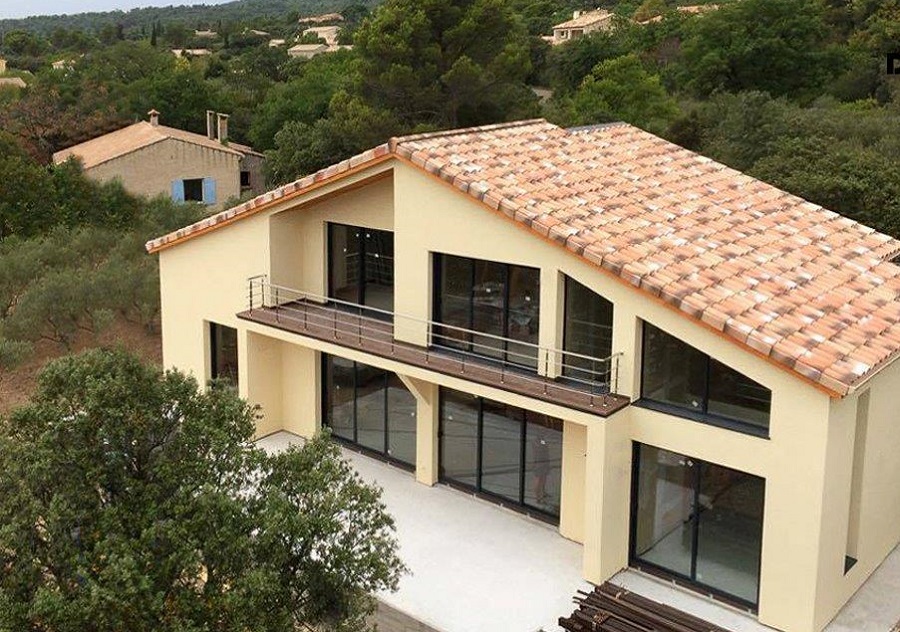
In Gordes, a famous town close to the Mediterranean and the Côte d'Azur
Despite being a commune of just over 2000 inhabitants, Gordes is known beyond the borders of France. Located in the Provence-Alps-Côte d'Azur region, it is a tourist destination appreciated not only for its beauty and proximity to the Mediterranean but also for its history. Lucky visitors to the area discover the castle rebuilt in the Renaissance period or the ancient village with houses made entirely of stone. During the Second World War it was a French Resistance stronghold, and the commune was awarded the War Cross for the heroism and sacrifice of its inhabitants. Rebuilt after the war, it became an attraction for artists, Marc Chagall being one of the most famous painters to have created here. The area is hilly, with olive trees and vines, which has attracted film producers. The region has been the setting for a number of films, including Ridley Scott's A Good Year, which I never tire of seeing again.
But back to the houses. All this notoriety comes with rules that must be strictly adhered to in order to build in this place. The houses must blend in perfectly with the landscape, only earth colours (ochre) and stone are allowed to finish the houses, and the roof must be made of burnt earth pottery. The land may not be enclosed with wooden fences but only with stone, and the alleys, called calade, it is also covered with stone. In order to comply with the rules, most buildings are built with stone, as they were in the past.
However, the owners of the house we are talking about decided to build it from prefabricated wooden structures. Convinced of the energy efficiency of these houses, impressed by the speed of construction and dreaming of a healthy indoor climate, they chose to build a wooden house.
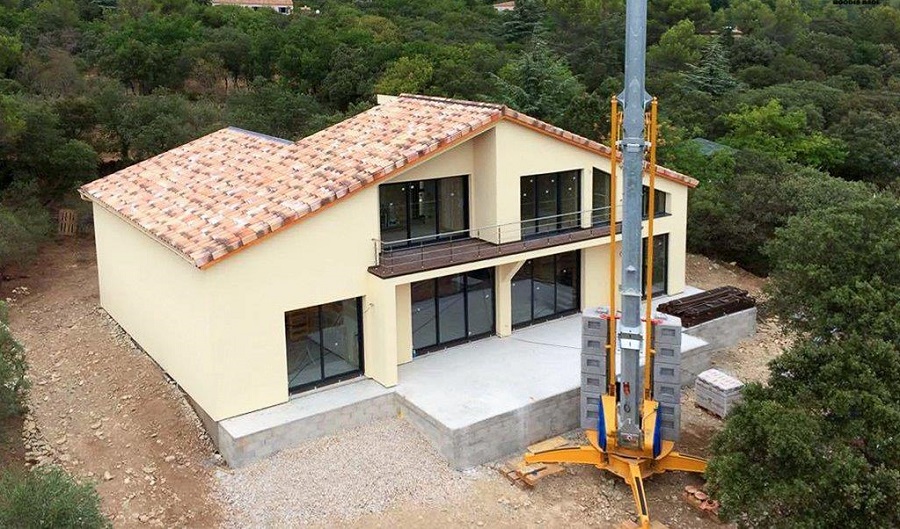
House around the olive trees
The land on which the house was to be built was on a hill overlooking the Mediterranean. In the middle of the land were two olive trees, very close together, grown from the same root. The owners wanted to keep them and the house to be designed and built to include the two olive trees.
The house, with a ground floor of 162 m², a first floor of 93 m² and 143 m² of landscaped terraces, was designed so that the olive trees are in the middle. There are three bodies enclosing an inner courtyard "paved" with wood, in the middle of which are trees. The house has a central building, from which two other buildings extend to the rear. One of the buildings has a shorter storey, allowing a terrace from which you can enjoy the crown of olive trees. The design follows the pattern of Provençal houses, with large, bright windows and tall, glazed doors that open generously onto the terrace.
The elements of the house - walls, floorboards, wooden roof - were built in the Dimmer factory in Comănești. Being a spacious house it took 6 weeks to build all the elements. The necessary wood was cut and dried in the factory. After lamination and the necessary mechanical processing of the joints, the wood was treated by immersion with fire retardant and insect repellent substances. Basaltic wool was installed in the wall frames. Finally, all the elements were packed and transported to the site in France.
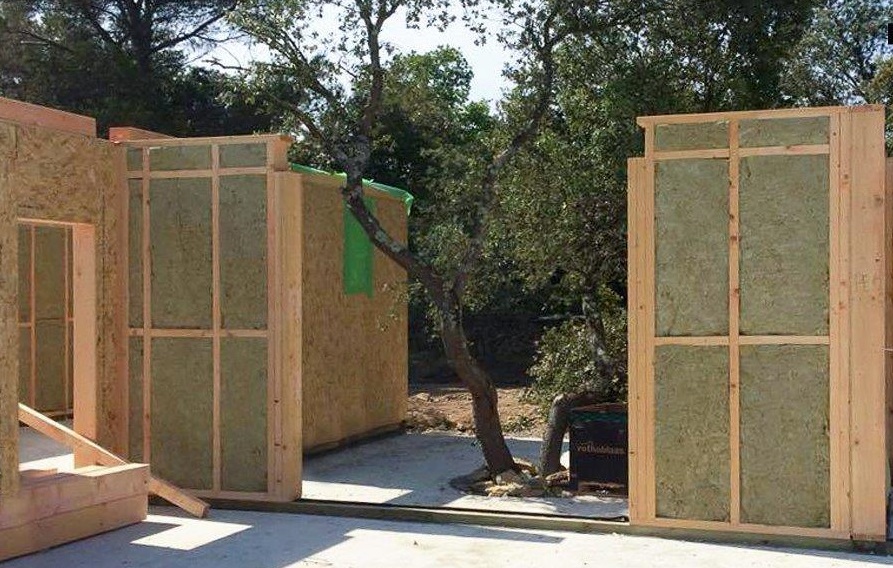
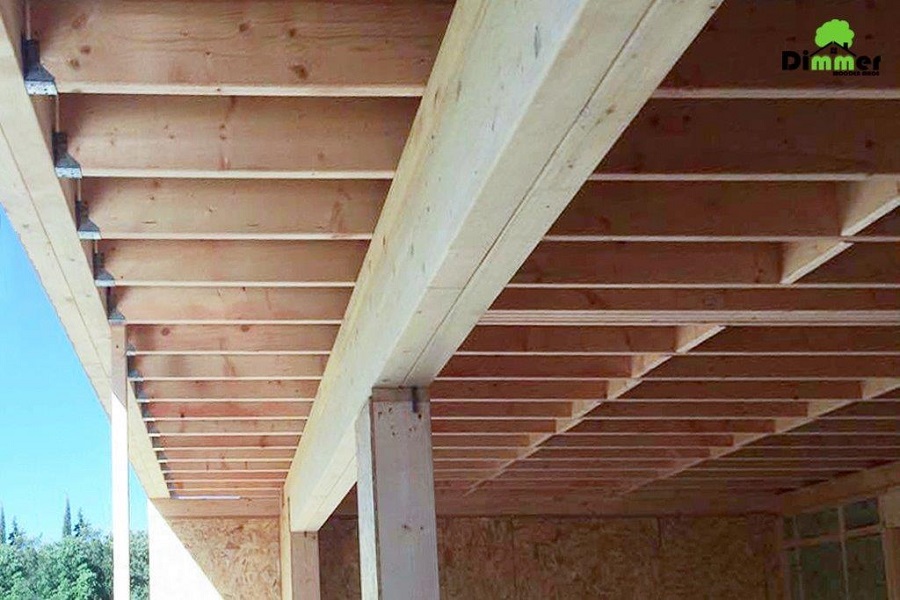
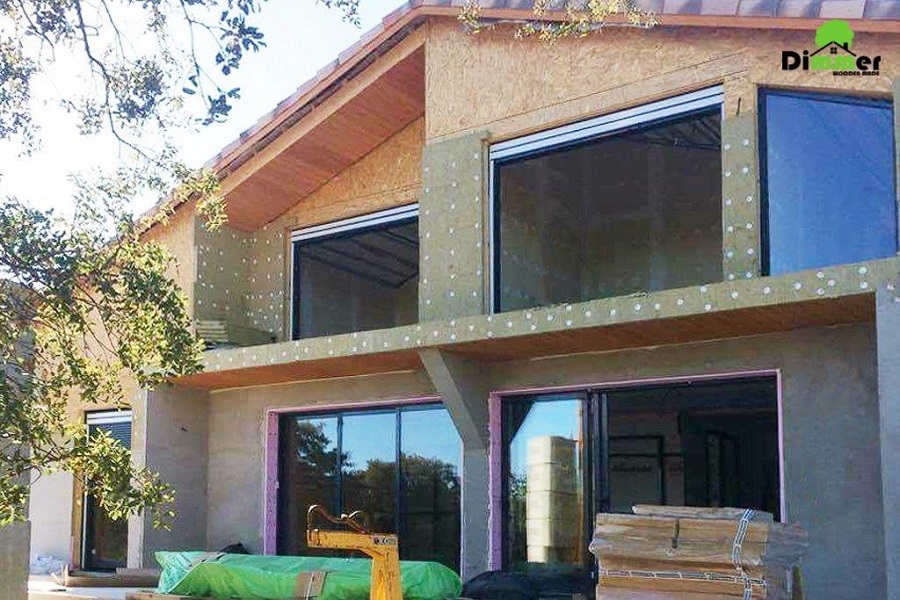
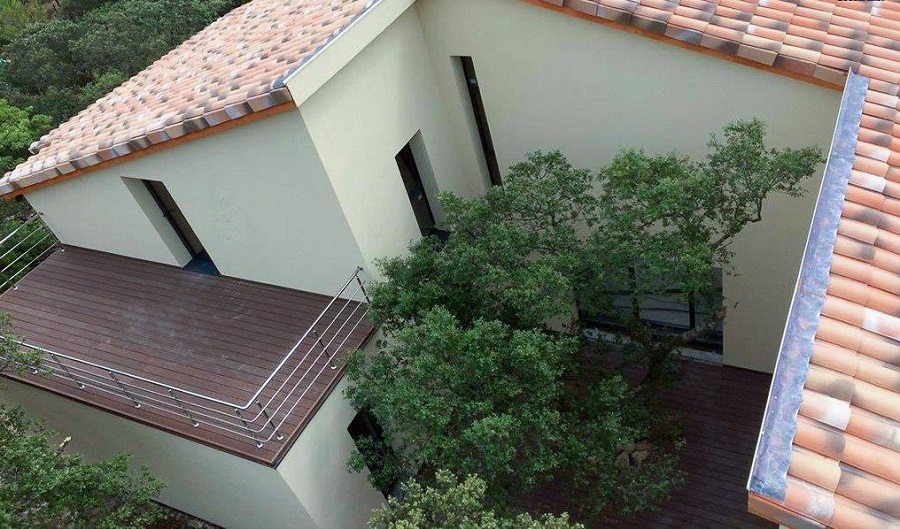
Because they worked fast and well, they'll be back
Work began on site in May with the pouring of the foundation. Across the road was another site, for a stone house, started a year ago. After the time needed to harden the concrete, work began on installing the house's components. Assembling the house and covering it took less than a month. Basically, in 3 months, including the time in the factory, the house was ready "in red". Short working time on site is precisely due to prefabrication in the factory. The higher the degree of prefabrication, the shorter the time spent on site.
The work continued inside with the electrical, heating and water supply routes, plastering the walls and finishing them. On the outside the house was clad with 100 mm thick basalt wool thermosystem, which was then plastered and painted. A colour specific to the area was chosen and the house blends in perfectly with the local landscape. Looking at it now, only the owners and those involved in the design and construction can still call it a wooden house. Everything was completed in October and the owners moved into the house in November. Work on the site across the street was ongoing and continued after the Dimmer team left.
Six months after the move, when the owners met again with Dimmer representatives, work was still going on at the construction site across the street. They returned to France at the request of the owners' daughter who was very pleased with the house and the speed with which it was built. She decided she wanted one just like it - made of prefabricated structures - by the same builders. And so they got another contract to start this spring. The pandemic delayed it a bit, but didn't stop it. Work on the factory will start soon, and on the construction site as soon as possible. Dimmer promised to keep us informed of developments. We await information and photos from the scene.
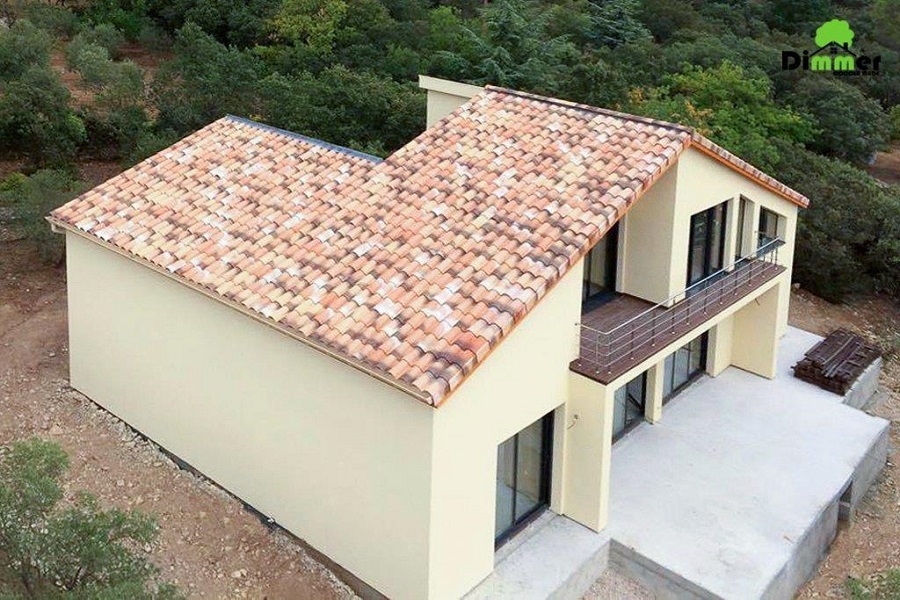

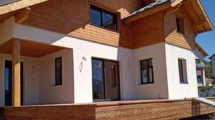

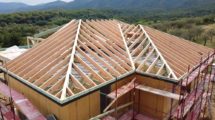
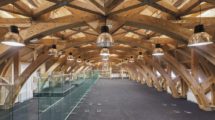
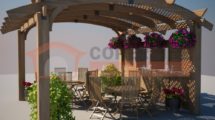
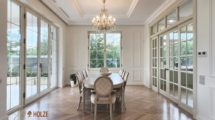




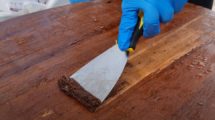




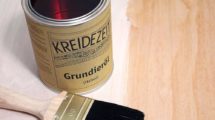
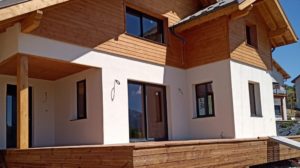
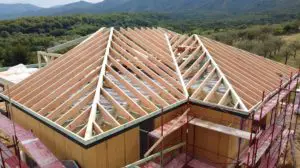
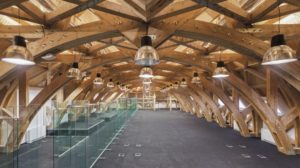
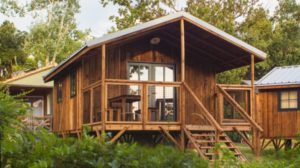

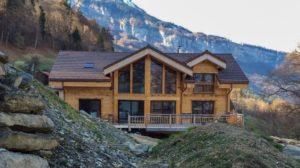






Add comment